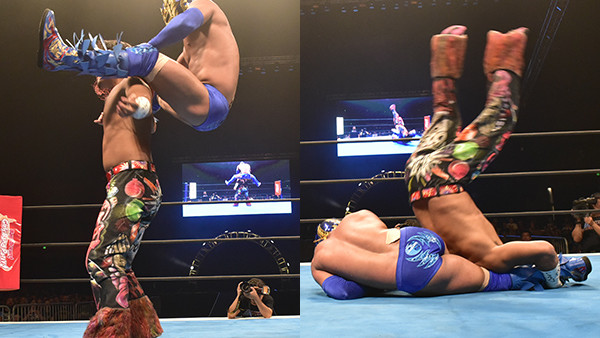Has NJPW's High-Risk Style Become Too Dangerous?

Hiromu was injured on a move that Dragon Lee has performed hundreds of times throughout his career, including dozens to Takahashi himself. Instead of letting his opponent go (which would've seen Takahashi land safely on his back), Lee cradled, and Hiromu's head took the full impact. On top of this, the 23-year-old was also working his fourth match in two days. He almost certainly wasn't operating at peak physical capacity.
But piling on Lee is an irresponsible response. This was a terrible, terrible accident, and the luchador is likely devastated by what happened. Making a villain of him only makes a sad situation even worse.
Performers like Lee and Takahashi go to these lengths in the name of entertainment. They want to have the best match on the card, and are therefore willing to take great risks in order to pop the crowd. This is their choice, but should NJPW take it out of their hands by enforcing a stricter set of rules in order to protect their employees' health, and prevent such accidents?
Again, it's nuanced.
Allowing head-drops and stiff strikes makes the New Japan style inherently more dangerous than, say, WWE's, but the promotion do take protective measures. Non-PPV cards are largely populated by multi-person tags. While these bouts aren't always exciting to watch, minimising each competitors' ring-time significantly reduces the risk of injury. Of the 139 matches Kazuchika Okada worked last year, only 17 were singles, most of which took place during the annual G1 round robin tournament. Kenny Omega, Hiroshi Tanahashi, Tetsuya Naito, and other top stars all possess similar stat lines.
On top of this, the promotion actively allow veteran performers to relax in said multi-person tags. Tanahashi will typically hide on the outside, pop the crowd, hit a couple of signature moves, then get back out. Togi Makabe will, on average, give you a mere 30-60 seconds worth of work. Such showings are ponderous, but smart, as the performers preserve themselves to go all out in bigger singles matches.

Despite this, the devastating toll puroresu can take on its practitioners can't be ignored. All Japan's bruising Kings Road style was wrestling's most revered product in the '90s, but destroyed its foremost purveyors, with Mitsuharu Misawa tragically dying in the ring in 2009. Katsuyori Shibata hasn't wrestled since suffering a subdural hematoma that almost killed him in April 2017. On month prior, Tomoaki Honma was hospitalised for three-and-a-half months after being temporarily paralysed by a rope-hang DDT. His finisher is an unprotected diving headbutt.
It'd be foolish to argue that this isn't a dangerous environment, but it's important to remember that the wrestlers perform these stunts out of choice. Booker Gedo didn't isn't holding a gun to their head and demanding danger. Still, the company can't be absolved of all blame: their duty of care is clear.
WWE's in-ring restrictions are legion, and fans regularly point to Vince McMahon's promotion as a bastion of safety. To the company's credit, their framework allows for far fewer bumps that could result in the kind of injury suffered by Takahashi, but the benefits are negated by a punishing road schedule every bit as dangerous as any in-ring style. A quick glance at the company's colossal injury list proves as much.
Following McMahon's precise blueprint is not the solution for NJPW. Instead, they must strike a balance. Get too heavy-handed, and they'll inevitably dilute the cutting edge in-ring product that drives their modern success, but another Shibata, Takahashi, or Honma is only ever a single move away in the current environment.
CONT'D...